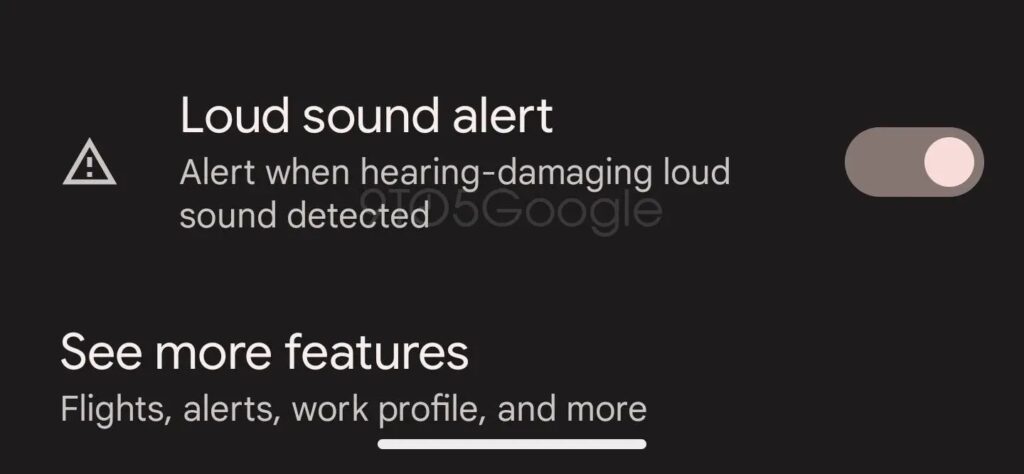
5-4 #BetterTomorrow : Samsung is expected to increase its spending to raise wafer input for R&D; TSMC’s Arizona wafer cost may be 20-30% higher; JOLED has filed for bankruptcy protection; etc.

Samsung is expected to increase its spending to raise wafer input for research and development. Kyung Kye-hyun, Samsung’s Device Solutions Division CEO overseeing global memory operations, System LSI, has said the company will increase its wafer input to “gain the upper hand in technology for future products”. Samsung eported its worst quarterly operating profit in 14 years for 1Q23. The company posted KRW640.2B (USD478.5M) in operating profit, plunging 96.6% on-year, as its sales fell by 18.1% to KRW63.75T. The company’s net income hit KRW1.57T, dipping 86.1% from a year ago. In 1Q23, the company invested a record KRW6.58T in research and development — over 10 times their operating profit — and also a record KRW10.7T in equipment and facility. Samsung also made a rare decision to cut its memory production to “a meaningful level”, joining the rivals to cope with the worsening business conditions and to adjust chip inventory.(Android Headlines, Korea Herald)

Samsung has reportedly improved the yield rates of its 3nm semiconductor chips and is now trying to win back customers that it lost to foundry rival TSMC in recent times. The company is sending 3nm prototypes to fabless chipmakers in an attempt to sway them on its side. Samsung has allegedly improved its 3nm yield rates to about 60-70% in recent months. Samsung is producing its 3nm chips using the GAA architecture. TSMC, on the other hand, is sticking to the FinFET tech for one more generation. It plans to switch to GAA with 2nm chips in 2025. TSMC has already secured large orders from Apple, AMD, MediaTek, Nvidia, and Qualcomm. It plans to start mass-producing 3nm chips for these customers early 2024. TSMC will manufacture 3nm chips for HPC in 2025 and automobiles in 2026. (FNN, Android Headlines, WCCFtech, SamMobile)

Arm has announced that it has confidentially submitted a draft registration statement on Form F-1 to the U.S. Securities and Exchange Commission ( “SEC”) relating to the proposed initial public offering of American depositary shares representing its ordinary shares. The size and price range for the proposed offering have yet to be determined. The initial public offering is subject to market and other conditions and the completion of the SEC’s review process.(CN Beta, The Register, Business Wire, iFeng, Nikkei, Electronics Weekly)
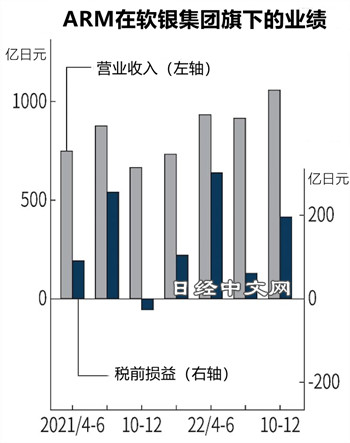
TSMC has begun to formulate pricing strategies for its new overseas wafer fabs. Quotes for advanced chips to be fabricated by its plant in Arizona are estimated to be 20-30% higher than corresponding prices in Taiwan. TSMC has started discussions with customers about orders and pricing for both overseas plants, which are set to begin commercial production in late 2024. According to Digitimes, prices of chips produced on TSMC’s N4 / N5 process technologies in the U.S. will be 20-30% higher than those in Taiwan, while older process chips produced in Japan’s Kumamoto facility on N28 / N22 as well as N16 / N12 nodes may cost 10-15% more than similar chips fabbed in Taiwan. Given the high construction and operational costs of fabs in Japan and the U.S., TSMC is going to pass those extra expenses on to customers to maintain its gross margin target of 53%. Meanwhile, TSMC has reportedly maintained a 20-30% discount for Apple, its largest customer, contributing to 25% of its revenue.(CN Beta, Tom’s Hardware, Digitimes)
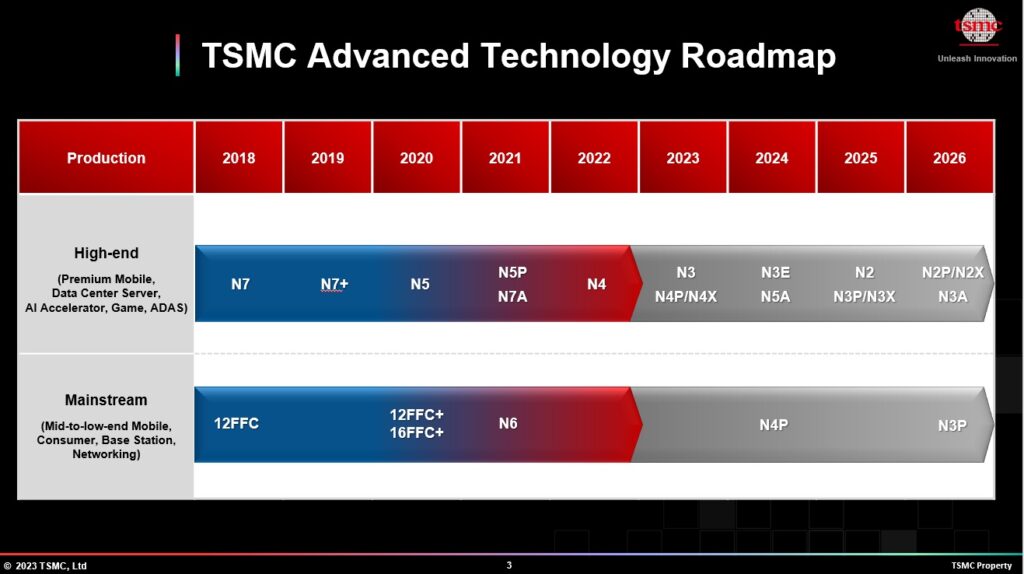
TSMC has released a progress and roadmap update for their N3 family process technologies. TSMC’s big roadmap updates on the N3 front were with N3P and its high performance variant, N3X. N3P will be an optical shrink of N3E, offering enhanced performance, reduced power consumption, and increased transistor density compared to N3E, all while maintaining compatibility with N3E’s design rules. Meanwhile, N3X will wed extreme performance with 3nm-class densities, offering higher clockspeeds for high performance CPUs and other processors. TSMC’s N3 (3nm-class) family of process technologies is comprised of several variants, including baseline N3 (aka N3B), relaxed N3E with reduced costs, N3P with enhanced performance and chip density, and N3X with higher voltage tolerances.(EDN, AnandTech)
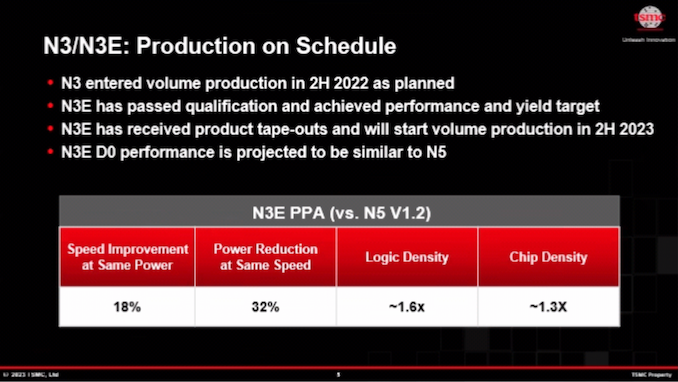
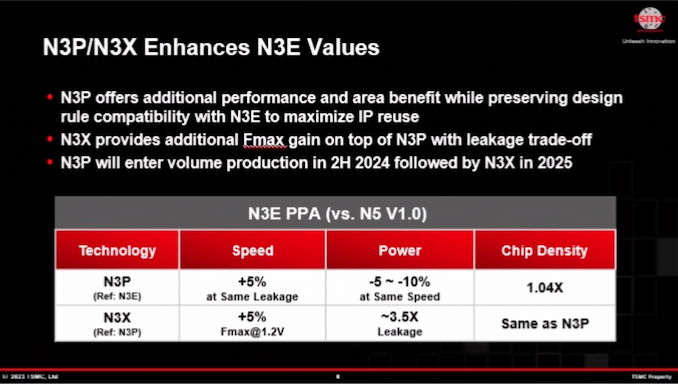
Taiwan Semiconductor Manufacturing Co (TSMC) is in talks with partners to invest as much as EUR10B (USD11.04 B) to build a chip fabrication plant in Saxony, Germany. The venture between TSMC, NXP Semiconductors NV, Robert Bosch GmbH and Infineon Technologies AG will have a budget of at least EUR7B, including state subsidies, but is likely to end up closer to EUR10B. TSMC is still evaluating the possibility of building a fab in Europe. (Laoyaoba, Bloomberg, Yahoo, Reuters, SCMP, CNYes, China Times, MoneyDJ)
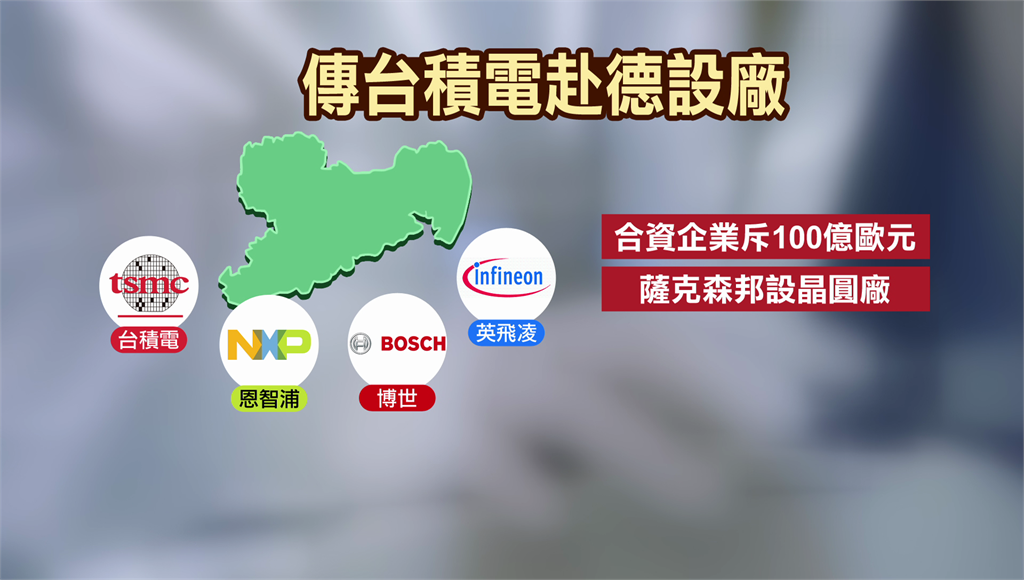
MediaTek has unveiled its newest addition to the Dimensity SoC lineup, the Dimensity 7050. It is a 6nm SoC with two Cortex-A78 and six Cortex-A55 cores working at 2.6GHz and 2.0GHz, respectively. The GPU side of the Dimensity 7050 is Mali-G68 MC4 and it also comes with MediaTek APU 3.0 AI accelerator. The SoC comes with support for LPDDR5 memory, UFS 3.1 storage, and supports 1080p+ displays with up to 120Hz. Connectivity includes dual SIM 5G, WiFi 6, and Bluetooth 5.2, as well as all the usual GPS.(MediaTek, Fudzilla, 91Mobiles, GSM Arena, Gizmo China)
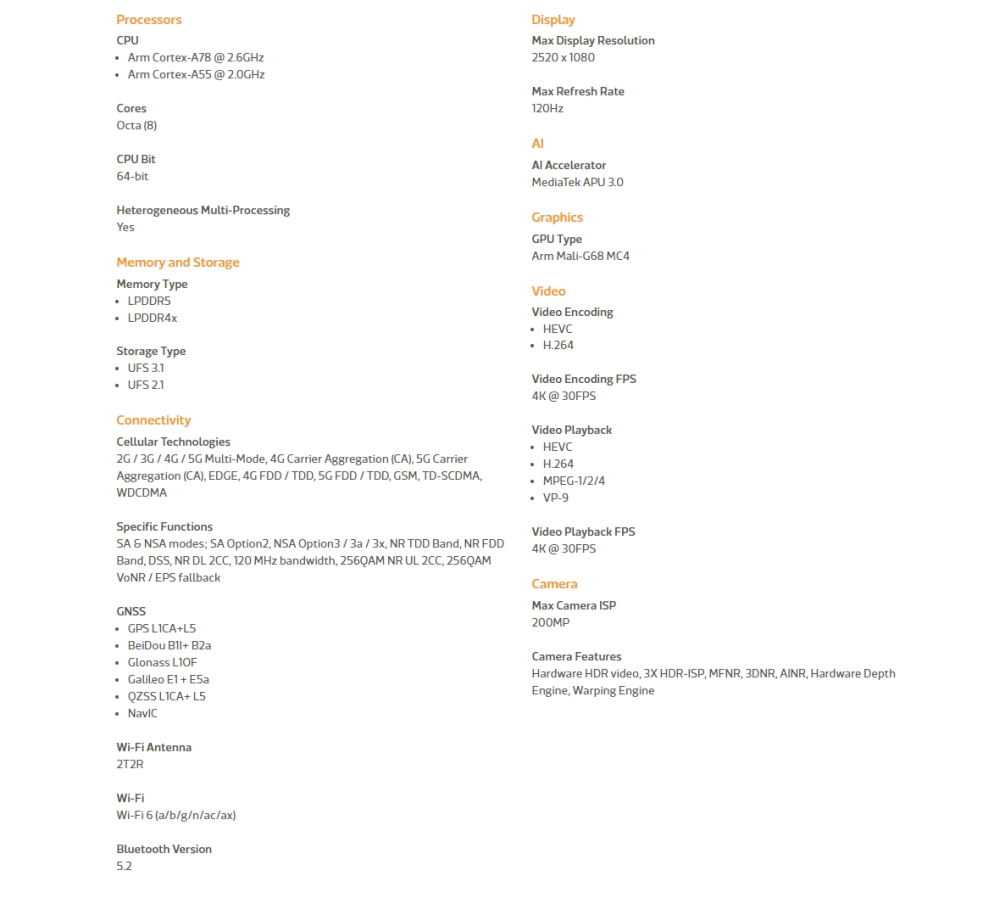
Google is reportedly considering switching to TSMC for manufacturing its next-gen Tensor processor, the Tensor G4. However, the latter’s high prices may force it to stick with Samsung, which manufactured the first three generations of Tensor chips. The Pixel maker appears undecided at the moment. After 3 generations of Tensor being manufactured by Samsung, Google now allegedly plans to switch to TSMC for manufacturing its future Tensor chips, starting with Tensor G4 in 2024. The idea is to use TSMC’s 4nm process node for Tensor G4 and 3nm node for Tensor G5 in 2025. However, TSMC’s prices are reportedly “too high” compared to Samsung. (Android Headlines, Twitter, 9to5Google, Pulse News)
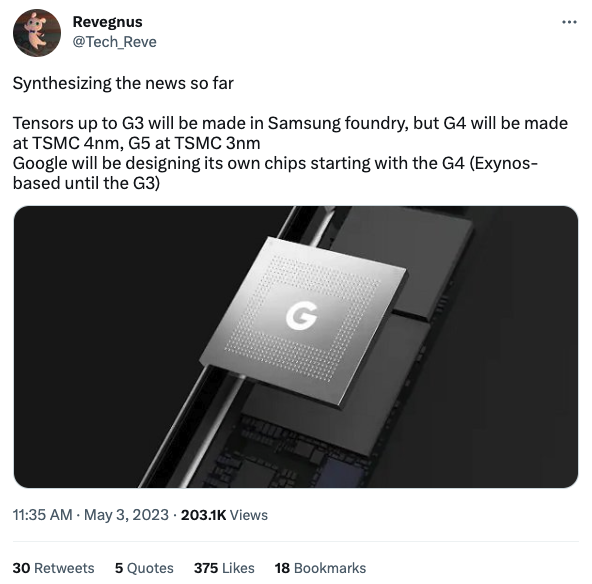
Samsung Foundry has revealed that it improved the yield of its 4nm chip manufacturing process to a level close to its 5nm production capabilities. Thanks to these massive yield improvements in 4nm chip manufacturing, Samsung could convince 2 big clients to choose its foundry over TSMC. Those clients are AMD and Google, whose Tensor 3 chip that will be used inside the Google Pixel 8 will be made by Samsung on its third-generation 4nm process node.(Gizmo China, Twitter, WCCFtech, SamMobile, Pulse News)
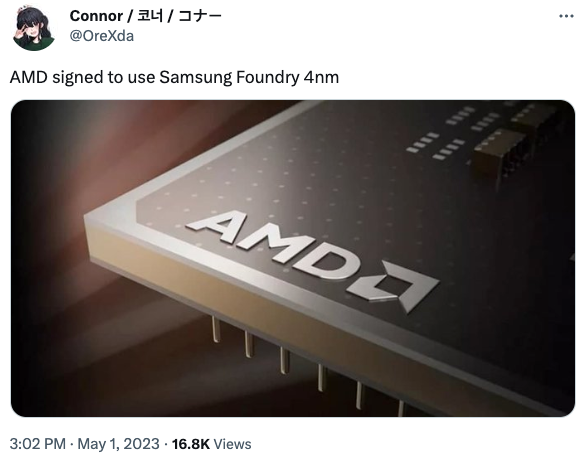
Qualcomm’s revenue in its fiscal 3Q23 will be USD8.1B-8.9B. Weak demand for phones has led to a buildup in handset chips — the company’s main source of revenue. The compamy CEO Cristiano Amon has indicated that the company now expects the total market for phones to shrink by a percentage range in the high single digits in 2023. Inventory reductions by customers will likely continue for 2 more quarters, Qualcomm projected. Demand in China has not returned to the levels that Qualcomm and others had expected. In the longer run, Qualcomm is looking to decrease its reliance on smartphones by selling more chips for cars, networking, computing and wearable devices. The company is considering acquisitions that would accelerate that diversification.(Bloomberg, Yahoo, Laoyaoba)
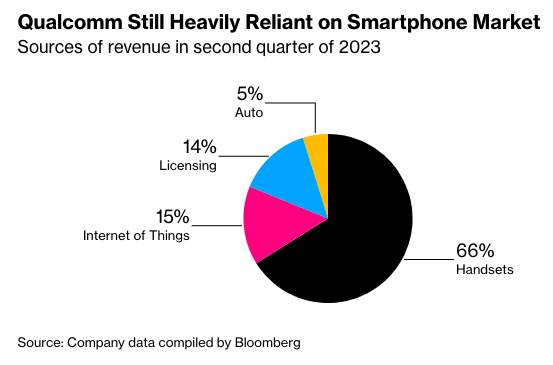

Samsung Display and LG Display are spending billions of dollars on new production capacity for midsize organic light-emitting diode (OLED) panels to secure business for Apple’s iPads and MacBooks and to keep out Chinese rivals from this premium market. Samsung Display is investing KRW4.1T (USD3.05B) to install OLED production lines at the company’s main Tangjeong production campus in South Korea. Samsung Display will produce the world’s first OLED panels from so-called Gen-8.6 substrates, which measure 2620 x 2200mm. Plans are to churn out 10M or so midsize panels for notebook computers per year. LG Display is spending KRW3.3T on installing new production lines for midsize OLED panels at its mainline Paju plant. The lines will adopt Gen-6 technology, reflecting its calculation that technological and cost considerations make it infeasible to match Samsung’s advances. Chinese companies such as BOE, Visionox, and Everdisplay Optronics are also moving to expand OLED production capacity. As a result, although Samsung and LG have approximately 80% of the worldwide OLED market, Chinese suppliers are steadily gaining a share of the OLED market. (Apple Insider, Asia Nikkei)
Japan’s JOLED, a company formed in a 2015 merger of the organic light-emitting diode (OLED) businesses of Panasonic and Sony, has filed for bankruptcy protection at the Tokyo District Court. JOLED has total liabilities of JPY33.7B (USD257M). JOLED signed a basic agreement to transfer its technology and development operations, which have around 100 employees, to Apple supplier Japan Display. Japan Display has said it agreed to acquire JOLED’s intellectual property and know-how in order “to expand and accelerate” its growth strategy. Japan Display initially owned 15% of JOLED, but in Mar 2020 transferred that stake to state-backed investment fund INCJ, formerly known as Innovation Network Corp of Japan. Japan Display has had its own struggle with chronic losses. (Asia Nikkei, AnandTech)
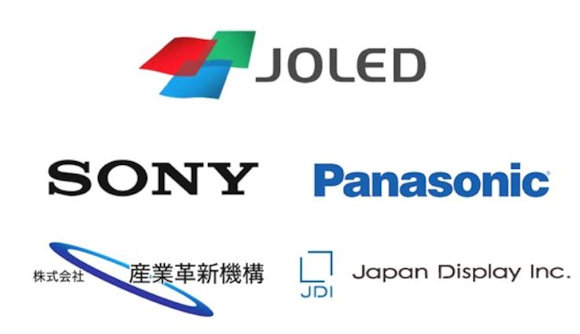
China-based LCD maker HKC Corp has signed an agreement with Japan Display Inc (JDI) to adopt its technology for mass production of AMOLED displays. Under the agreement HKC will invest billions to build AMOLED factories in China, while JDI will provide the manufacturing expertise and technologies, including eLEAP. The plan is to begin mass production in 2025, with the first applications to be in automotive displays and wearable devices. Senior executives of HKC has allegedly been paying visits to South Korea for months recently and offering to order equipment to domestic equipment companies. HKC has mentioned investing in Gen-6 and Gen-8 OLED investment to these potential partners.(The Elec, OLED-Info, TechNews, Sina)
Samsung Electronics and LG Display have resumed discussions on a deal that would see LG supplying more than 200,000 white OLED (WOLED) panels to Samsung for a new line of Samsung-branded TVs that could launch as soon as 2024. That number would potentially be just the start of a longer partnership. If Samsung procures W-OLED panels from LG Display, it can diversify its OLED TV portfolio to the mid-end. LG Display may also want the deal more than ever with Samsung as 2022 it recorded close to KRW2T in operating loss and is expected to record another loss in 1Q23. (The Elec, OLED-Info, Ars Technica)
LG Display (LGD) has begun developing a new etching technology for OLED panels that will be supplied to Apple. The technology is being prepared by the company to launch a so-called hybrid OLED panel, which uses a glass substrate like a rigid OLED panel but uses thin-film encapsulation (TFE) like that of a flexible OLED panel. Apple is planning to use OLED panels with two emission layers, also known as two stack tandem, and low-temperature polycrystalline oxide (LTPO) thin-film transistors (TFT). LG Display already makes two stack tandem OLED panels though they are for automobiles. Samsung Display is ahead of the pack in LTPO OLED panels, having already made most of them for Apple to use in iPhones.(The Elec,9to5Mac)
Huawei, ZTE and BOE, are reportedly teaming up to create the best foldable OLED screen with an under-display camera. The first phone to potentially benefit from the cutting-edge display tech is Huawei’s future foldable Mate X4 smartphone. The new so-called “Q8” OLED panel is rumored to finally solve the camera quality issues, mostly thanks to ZTE’s expertise in the field and BOE’s tradition in producing displays. The new display is rumored to have a 2480 x 1116px resolution and use high-frequency 1,440Hz PWM dimming.(GSM Arena, Weibo, Notebookcheck, Gizmo China, CN Beta, EET-China)
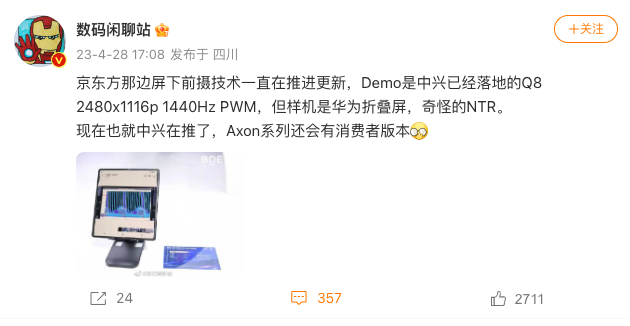

Samsung Electronics and SK Hynix have been targeting the expansion of the DDR5 memory market. The decision was made to recover the losses faced in 1Q23. Since customers avoid buying DDR4, as per analysts, increasing the supply of DDR5 memory can accelerate the chipmaker’s step out from the semiconductor market decline. Samsung Electronics lagged behind SK Hynix in mass production of 10nm DDR5 DRAM. According to market research firm OMDIA, DDR5 DRAM will account for 12% of the DRAM market in 2023, up from 3% in 2022. They are expected to grow to 27% in 2024, overtaking DDR4 (23 percent). DDR5 DRAM will be responsible for 12 percent of the DRAM market in 2023. This is up by 3% with respect to 2022. While, they predict to grow to 27% in 2024, surpassing DDR4 by 23% respectively.(Gizmo China, IT Home, SamNews24)
Samsung Electronics is expected to cut its memory chip production by up to 25% in an effort to ease inventory woe. Daishin Securities analyst Wi Min‑bok predicted that the reduction level could be 20-25% in 1H23 compared to the same period a year ago. KB Securities estimated that Samsung’s NAND flash production in the Apr-Jun 2023 will decrease by 15% on-year, while DRAM production will drop by more than 20% starting from 3Q23. Samsung Securities analyst Hwang Min-seong forecast that more cuts could be carried out if the ongoing reduction fails to lower Samsung’s inventory level sufficiently.(Gizmo China, Korea Herald, SamMobile)
SK Hynix has denied reports that it plans to dispose of its new semiconductor fabrication plant in Dalian, a port city in northeast Liaoning province, amid US-led restrictions on exports of hi-tech manufacturing equipment to China. SK Hynix is allegedly delaying construction and considering the sale of its Dalian 3D NAND flash memory factory, which the company acquired for USD9B from Intel in Dec 2021, in light of trade restrictions and slumping demand in the global memory chip market.(My Drivers, Yahoo, SCMP)
Seagate Technology, a data-storage company based in Dublin, Ireland, has been fined USD300M by the US Department of Commerce’s Bureau of Industry and Security (BIS) for continuing to sell hard disk drives to Huawei in 17 Aug 2020 to 29 Sept 2021. The US Department of Commerce has announced the settlement, calling it the largest standalone administrative penalty in the history of the Bureau of Industry and Security (BIS), which regulates federal export controls. (Laoyaoba, Evertiq, Quartz, BIS)

LG Innotek has acquired 77 patents in the US from the now defunct autonomous driving startup Argo AI. Argo AI, which closed its business in Oct 2022, was an autonomous driving startup that focused on lidar sensor technologies. The startup transferred 113 patents in the US to Ford Global Technologies in Mar 2023 as well. The patents LG Innotek acquired include those for polarization filtering in lidar systems. LG Innotek has considered working with Argo AI in the past but the startup close its business before this could happen. LG Innotek has been vocal recently on fostering its camera module and lidar businesses for automobiles.(The Elec, Sina, Laoyaoba)
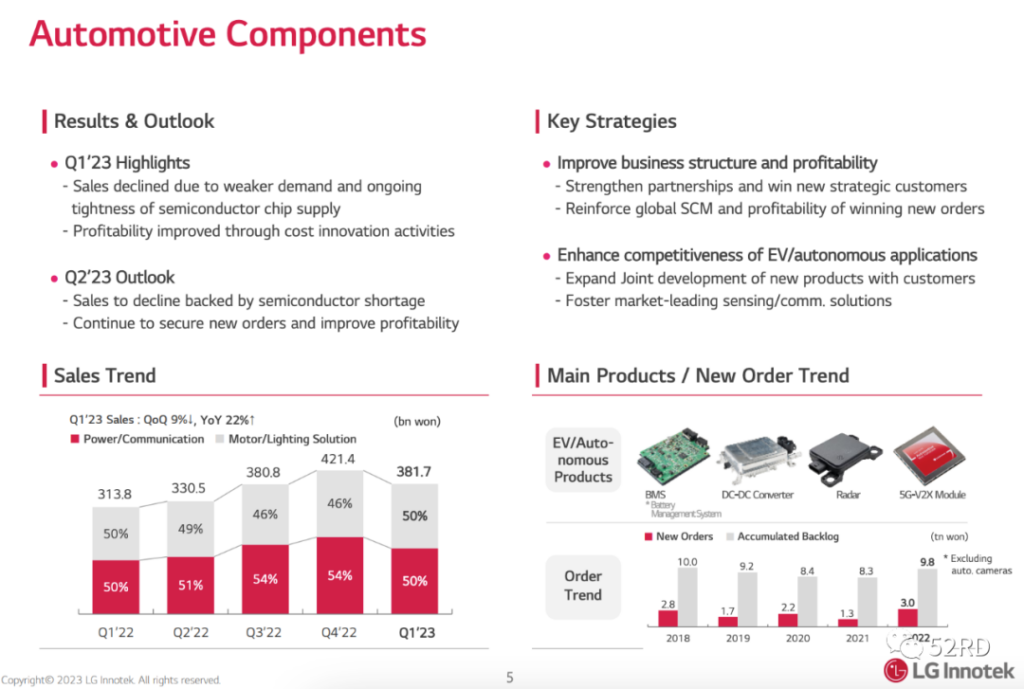

Google has announced that it is introducing support for passkeys, providing an easier and more secure login method for Google accounts. Apple integrated passkeys into iOS with the launch of iOS 16, and it is also available in iPadOS 16.1 and later as well as macOS Ventura. Passkeys are an industry standard developed by the FIDO Alliance and the World Wide Web Consortium, so Google’s passkey integration will work on Apple devices as well as on other devices that support the feature. To create a passkey, Google users can log in to their Google account and then choose the “Create a passkey” option. Passkeys on iOS and Mac devices sync with iCloud Keychain for security purposes, and logins are authenticated with Face ID or Touch ID. (MacRumors, Google)


Apple and Google have jointly submitted a proposed industry specification to help combat the misuse of Bluetooth location-tracking devices for unwanted tracking. The specification will allow Bluetooth location-tracking devices to be compatible with unauthorized tracking detection and alerts across iOS and Android platforms. Samsung, Tile, Chipolo, eufy Security, and Pebblebee have expressed support for the draft specification, which offers best practices and instructions for manufacturers, should they choose to build these capabilities into their products. (Apple Insider, TechCrunch, The Verge, Apple, IETF)

Google is reportedly planning to add loud sound alerts in At a Glance. The latest version (T.23) of Android System Intelligence for the Pixel 7 reveals a “Loud sound alert” capability that will warn user “when [a] hearing-damaging loud sound [is] detected”. The health capability builds on Google’s other audio features. Pixel phones already offer a Now Playing feature that works in the background to detect songs that are playing in the background using an on-device database. (Phone Arena, 9to5Google)
